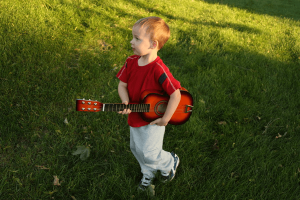Summer is here, and that means the kids get to play all day. While the kids have been looking forward to this since last September, you’re probably apprehensive. After all, when kids play, they almost always come home with a bump, cut, or bruise—and some are worse than others. You may not have a nursing degree, but here are some invaluable skills and supplies to keep in your first-aid kit this summer.
Blisters
Between the flip flops, clogs, and wet swimsuits, summer is prime time for blisters. Little kids are particularly susceptible; they grow so fast that they are often in new attire from summer to summer. The best way to treat it is to keep the blister clean and dry. Cover it with a clean bandage or some moleskin until it heals. Until it goes away, avoid putting pressure on the area.
Sunburn
Obviously coating those little buddies up in a high SPF sunscreen is the best way to avoid this, but let’s face it—sunburns happen. When they do, there are a few ways to soothe the pain and help it to heal a bit faster. Try putting a cool, damp cloth over the area to relieve the burn. If needed, a children’s strength pain reliever can also be used. Pure aloe gel like Earth’s Daughter should be applied liberally for healing. Also encourage your child to drink plenty of fluids.
Scrapes
With all of the outside play that goes along with summer, scrapes and scratches will be one of the most common complaints. If you can, wash the cut with soap and water, pat dry, and apply a triple antibiotic ointment like Neosporin. Cover with a bandage. If you are out and about, it’s helpful to carry an antiseptic spray; they disinfect and help with pain relief.
Poison Ivy
Remember—”leaves of three, let it be.” Unfortunately, it’s easy to forget to look out for that pesky poison ivy when you are having a great time. To alleviate the itching, use a calamine lotion three to four times a day. If swelling occurs, use hydrocortisone as needed. Make sure to follow the recommendations on the label regarding age restrictions and areas of recommended use.
Bruises and Sprains
Bumps, bruises, and sprains can be part of the aftermath of summer sports. Ice should be applied immediately to prevent or reduce swelling. For sprains, wrap the area firmly, but comfortably, in an ace bandage to brace the sprain and alleviate the pain. Topical or oral pain relievers can be used as an additional way to ease the pain. However, if the injury is serious, make an appointment with your family doctor for a more thorough examination.
Broken Bones
Unless you see bone jutting out from your child’s skin (let’s pray that never happens!), it can be hard to tell if they have a broken bone or just another average boo-boo. Kids cry over injuries both great and small, you’ll have to be on the alert for symptoms other than pain. Does the area look misshapen? Is it swollen? Can they use the limb after an hour? In most cases, a trip to the ER isn’t necessary. You can put an ice pack on the injury, administer a children’s pain reliever like Tylenol, and make an appointment with the doctor for the next day.
You may not have made it to nursing school yet, but rest assured, your children (and you) will survive the summer. For information about online nursing school options, visit the link.

